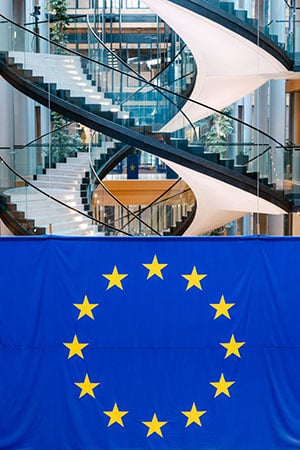We're Not Chasing the Pound Lower, Says Goldman Sachs
- Written by: Gary Howes

Image © Adobe Images
The British Pound can steady from here, although risks remain, says Goldman Sachs.
Analysts at the Wall Street bank say in a new note that the Pound is "down but not out," and that it can stabilise from here.
"While we acknowledge the wider distribution of risks, in our central view we are more inclined to push back on the extent of this week’s Sterling sell-off rather than to chase it further," says Kamakshya Trivedi, analyst at Goldman Sachs in London.
His call follows a significant slide in the Pound's value as investors grow nervous about the UK's debt market dynamics.
Compare Currency Exchange Rates
Find out how much you could save on your international transfer
Estimated saving compared to high street banks:
£25.00
Free • No obligation • Takes 2 minutes
Bonds have been sold off, causing a surge in their yield, which means it is more expensive for the government to service its own debt, necessitating the need for spending cuts and/or tax rises.
The Pound-Euro exchange rate has fallen 1.46% in 2025, while Pound-Dollar is down 2.55%.
Economists say markets are more nervous owing to the deterioration in UK growth fundamentals, which confirms the government has failed in its efforts to deliver policies that will lead to increased economic growth and tax receipts.
Trivedi points out that rising long-end yields have been at play in a number of markets in recent months (such as CAD and EUR); however, the pace of the move in the UK suggests a more acute reassessment of fiscal risks.

Trivedi says there are three reasons to fade the weakness.
Firstly, he says, some of the recent GBP weakness can partly be explained by the broader risk-off price action in FX markets this week, and as such, an eventual recovery in risk appetite should lend some support to the Pound.
Secondly, Goldman Sachs' rates strategists have recently argued that both the macro and the evolving net supply picture should point to an eventual compression in fiscal risk premium in Gilts, which could also imply some pricing-out of fiscal risks in the currency.
Thirdly, hard UK economic growth data that reflects the increase in government spending and investment will only become visible to the markets in the coming months. This could yield some positive surprises.
Risks to the Pound include the market's memory of previous fiscal risk episodes, the most recent being under Liz Truss.
"The clear risk to Sterling from here is an escalation in the loop of sell-offs in UK assets and a more strenuous fiscal position," warns Trivedi.
Also, there are a growing number of global risk drivers that Goldman Sachs thinks point to a more negative direction for the Pound-Dollar exchange rate in particular.
"A hawkish repricing for the path for Fed policy alongside continued strength in US inflation and labour market data points to a more difficult environment for the Pound from higher global yields, as well as to Dollar strength more directly," says Trivedi.
The Pound's best shot at redemption is seen against the Euro, which is particularly exposed to potential tariffs from Donald Trump.




